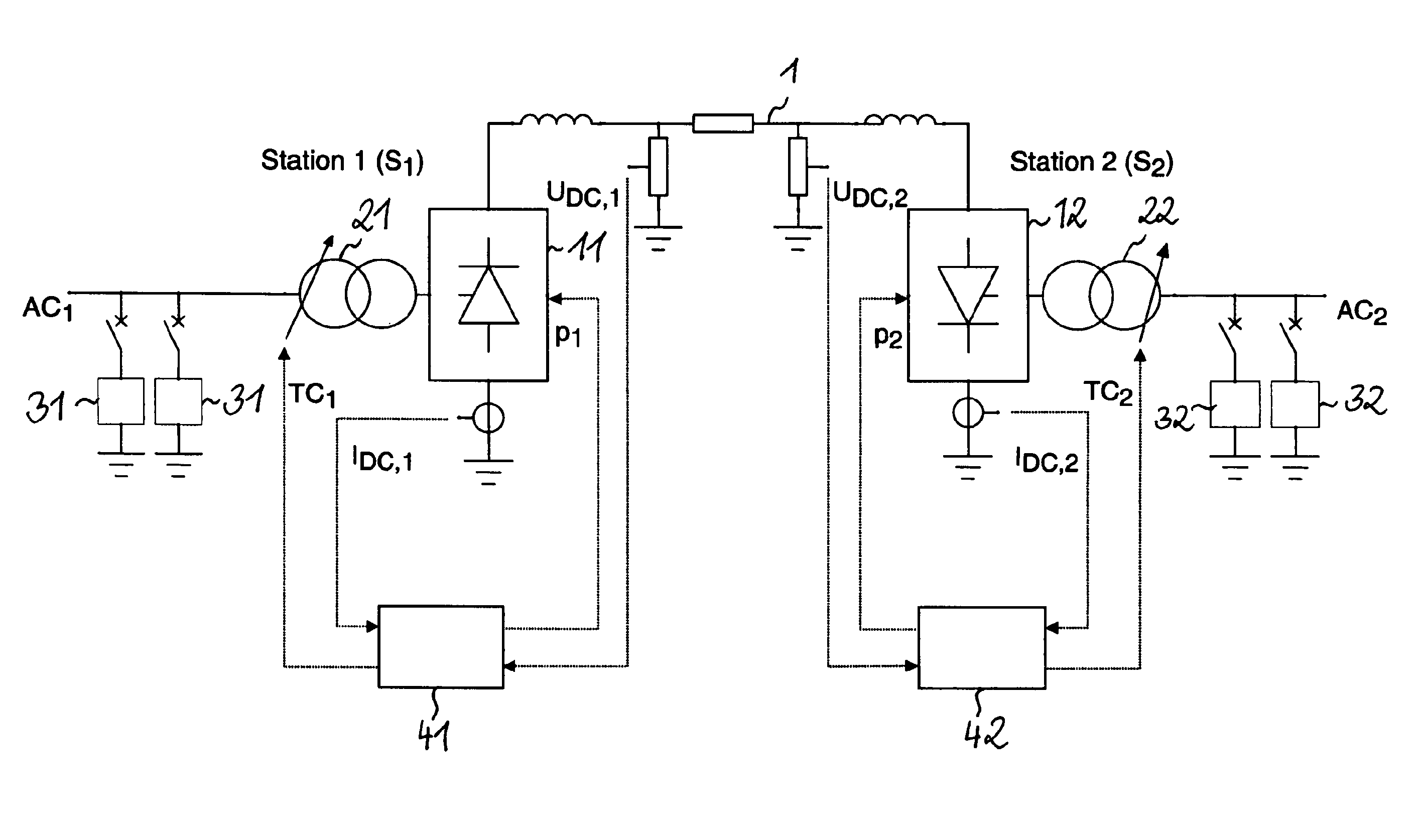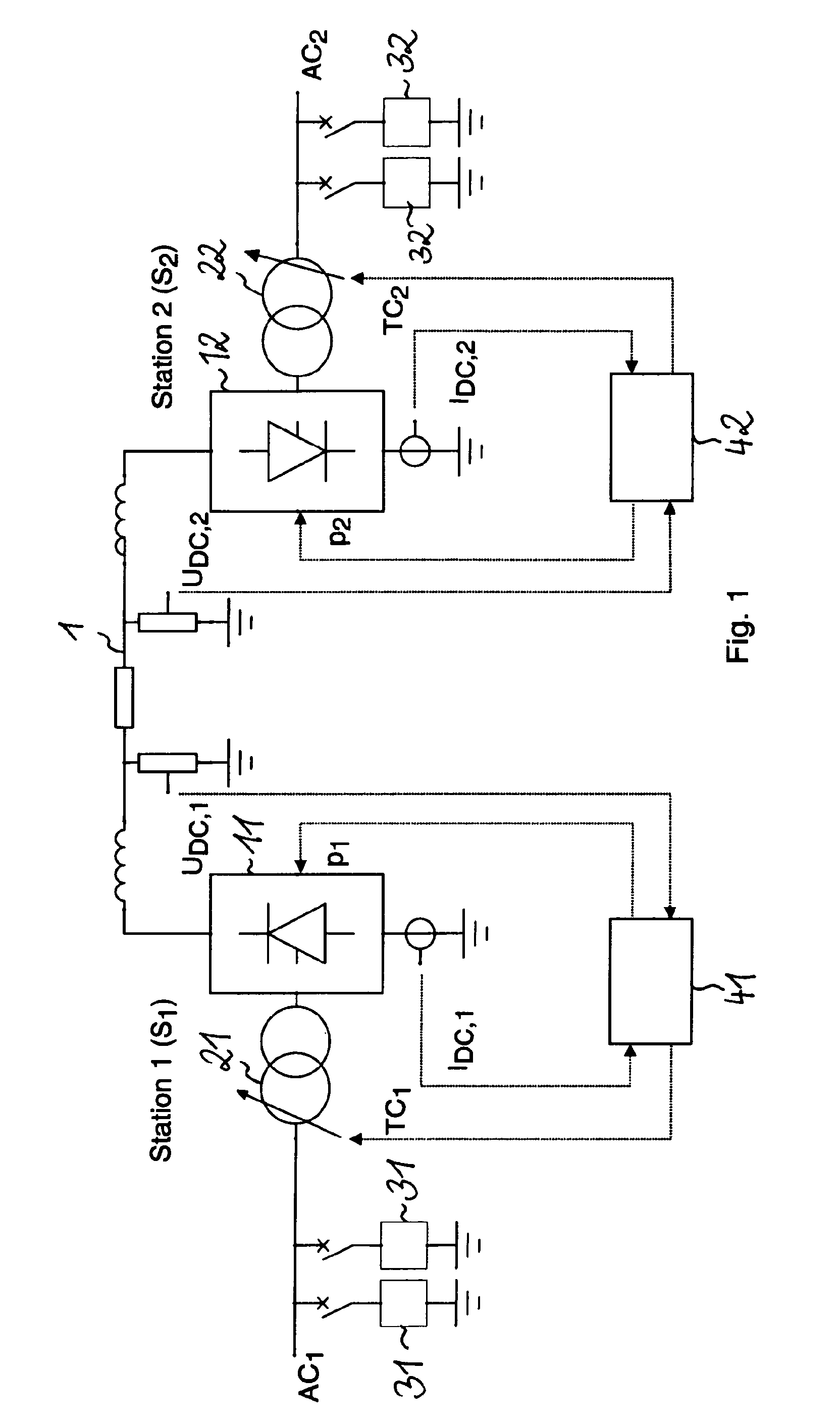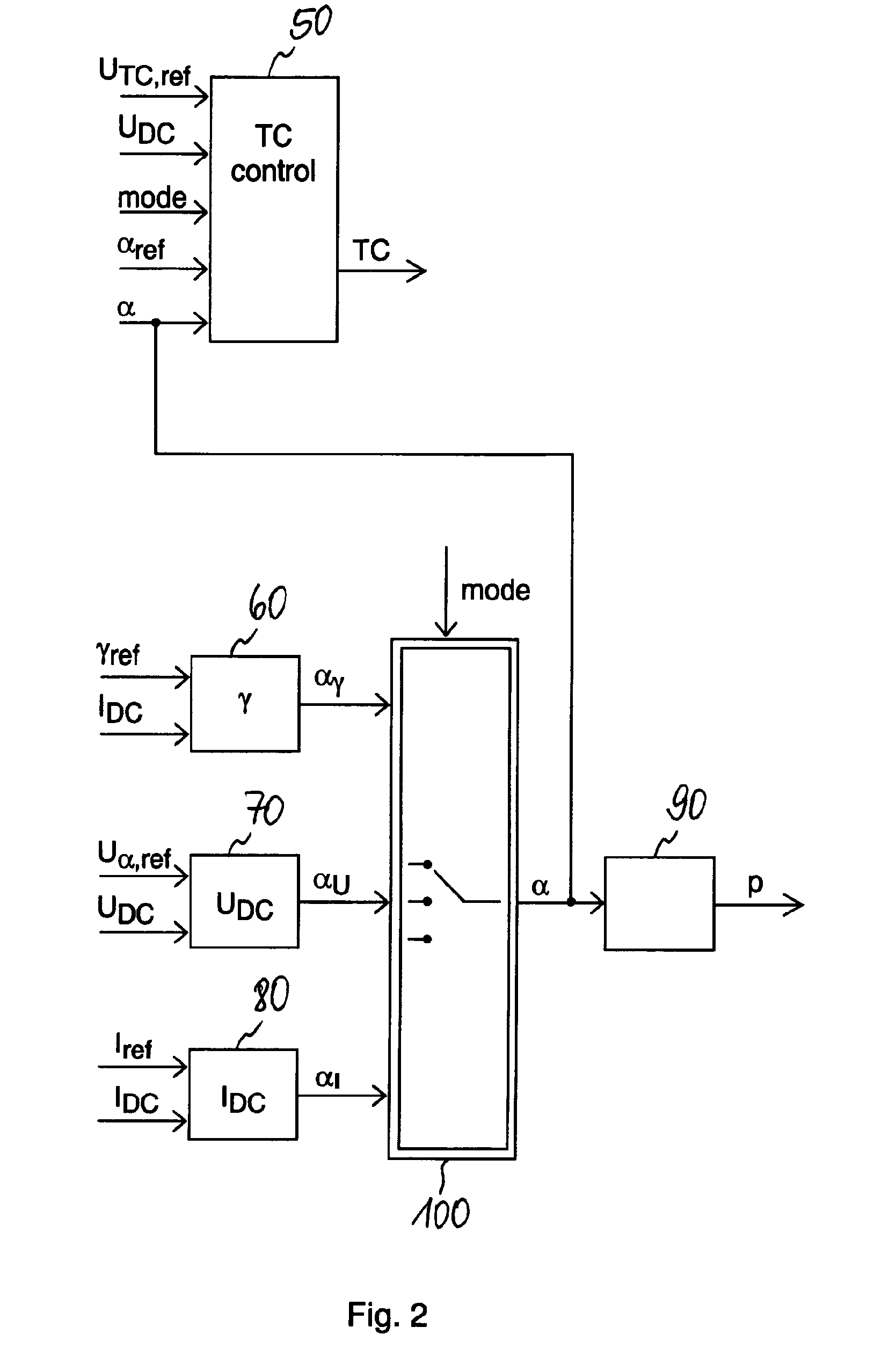Method and arrangement to reverse the power flow of a direct current power transmission system
a technology of direct current and power transmission system, which is applied in the direction of circuit arrangement, power conversion system, electric power transfer ac network, etc., can solve the problems of harmonic current generation and reactive power consumption, and achieve the effects of reducing direct voltage, reducing costs, and reducing stress on dc cables
- Summary
- Abstract
- Description
- Claims
- Application Information
AI Technical Summary
Benefits of technology
Problems solved by technology
Method used
Image
Examples
Embodiment Construction
[0040]In FIG. 1 a direct current power transmission system is shown which comprises a first converter station S1 and a second converter station S2. The converter stations S1 and S2 are coupled to each other via a direct current link 1. The direct current power transmission system is used to transfer active power P between a first alternative current power system AC1 and a second alternative current power system AC2.
[0041]Each of the converter stations S1 and S2 contains a line commutated converter 11 or 12, a transformer 21 or 22 with an on-load tap changer as well as elements for reactive power consumption which in this example are AC filters 31 and 32. The operation of the converter 11 and of the tap changer of the first converter station S1 is controlled via a first control unit 41. And the operation of the converter 12 and of the tap changer of the second converter station S2 is controlled via a second control unit 42. The first and the second control units 41 and 42 each receiv...
PUM
 Login to View More
Login to View More Abstract
Description
Claims
Application Information
 Login to View More
Login to View More - R&D
- Intellectual Property
- Life Sciences
- Materials
- Tech Scout
- Unparalleled Data Quality
- Higher Quality Content
- 60% Fewer Hallucinations
Browse by: Latest US Patents, China's latest patents, Technical Efficacy Thesaurus, Application Domain, Technology Topic, Popular Technical Reports.
© 2025 PatSnap. All rights reserved.Legal|Privacy policy|Modern Slavery Act Transparency Statement|Sitemap|About US| Contact US: help@patsnap.com



